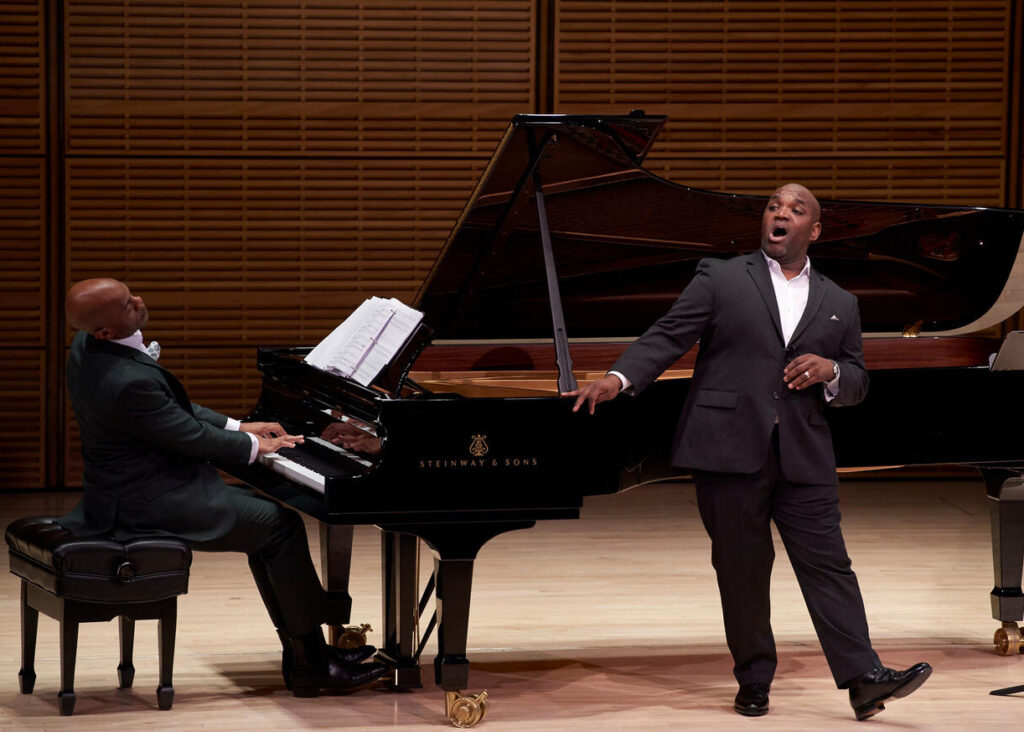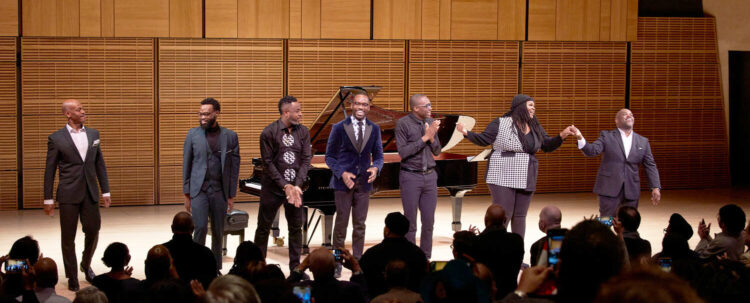By Gregory Moomjy
Whenever I write about Lawrence Brownlee, I find that I must always begin with his voice. This may seem obvious, and even weird for an opera critic to state, but the truth is, my admiration for him started with his voice. Let me clarify, I originally didn’t hear his voice, I read about it. As an up-and-coming-star singer, he was interviewed by Opera News when I was still in high school. The writer commented that his voice sounded as if it were straight out of a record being played on a Victrola. That was back when he was making waves with heavy hitting Bel Canto tenor roles like The Count in Barber of Seville or Tonio in La fille du régiment. I still remember seeing him on YouTube and being struck, not only with his impressive vocal range, but with the sterling tambor of his voice.
Many years later, I saw him on the Opera Philadelphia channel, where his concert Lawrence Brownlee and Friends, was the first time I had heard “Live Opera” since the start of lockdown (since it was online, it wasn’t truly “live” but it was close enough at that point of quarantine). I didn’t realize until hearing his voice, which was just as strong and rich as ever, how much I really missed opera.

Therefore, it should come as no surprise that when I attended his recent recital at Carnegie Hall’s intimate Zankel Hall, I was drawn in yet again by that glorious voice. Brownlee, who is also the artistic advisor to Opera Philadelphia, has become a champion of contemporary pieces and rediscovered works, particularly by black composers. This concert featured all modern music with new settings of texts from the Harlem Renaissance. These pieces might not be as flashy as the bel canto leading men that he’s been known for, but his excellent performance showcased his firm grounding in bel canto technique. He can still work magic and create a pure sustained tone. Even so, there were still a few instances where he could show off something akin to coloratura embellishments. For instance, the last song on the program Joel Thompson’s My People set to a text by Langston Hughes, shows the diverse emotional experiences of black people, including black joy. As such Brownlee was able to deploy sharp staccato notes depicting rather pointed laughter.
There were even several cases, such as in works by Carlos Simon, where he showcased the extensions in his head voice. Today we are used to tenors who sing their high notes in full-body chest voice or at least they try to. The fact that Brownlee was able to showcase an impressive falsetto range brought an angelic otherworldly quality to some of the pieces. This is fitting as religious devotion was certainly a theme that ran throughout the concert.
The accompanist, Kevin J. Miller, gave varied readings of the program, highlighting the dynamics of one piece or the use of dance rhythms in another. He could make one piece sound like a ballade by Chopin while bringing out the energy in another piece and highlighting the similarities to Rachmaninov’s Spring Waters. Brownlee and Miller will be touring this program across the country this Spring, and have it recorded for release on Warner Classics in June to celebrate Black Music Month.
The program featured music by many of todays heavy-hitting composers such as Damien Sneed, and Joel Thompson, whose opera The Snowy Day, recently premiered at Houston Grand Opera, alongside composers like Margaret Bonds who are finally getting their justly deserved recognition. Frequent patrons of Glimmerglass will remember Carlos Simon as the composer whose music accompanied a play by Sandra Seaton about Mary Cardwell Dawson, founder of the National Negro Opera Company. Glimmerglass offered that so-called “play with music” in two consecutive seasons. It debuted originally during the “Glimmerglass on the Grass” season during the pandemic and again the following season, 2022, in an expanded version. For those who saw it, they will remember that most of the music was from Carmen and only the last song was Carlos Simon’s. In this program, there were several pieces by Simon, so that you could get a better appreciation of his talents as a composer.
Although the selection for this concert steered away from flashy coloratura, the final piece was a tour de force example of word painting on the part of Joel Thompson. The evening ended with two encores of spirituals, which brought down the house and finished off the evening with a festive atmosphere. In short, the evening was a great example of how a community can come together and celebrate both America’s vocal music heritage as well as where the genre is headed in the future.

